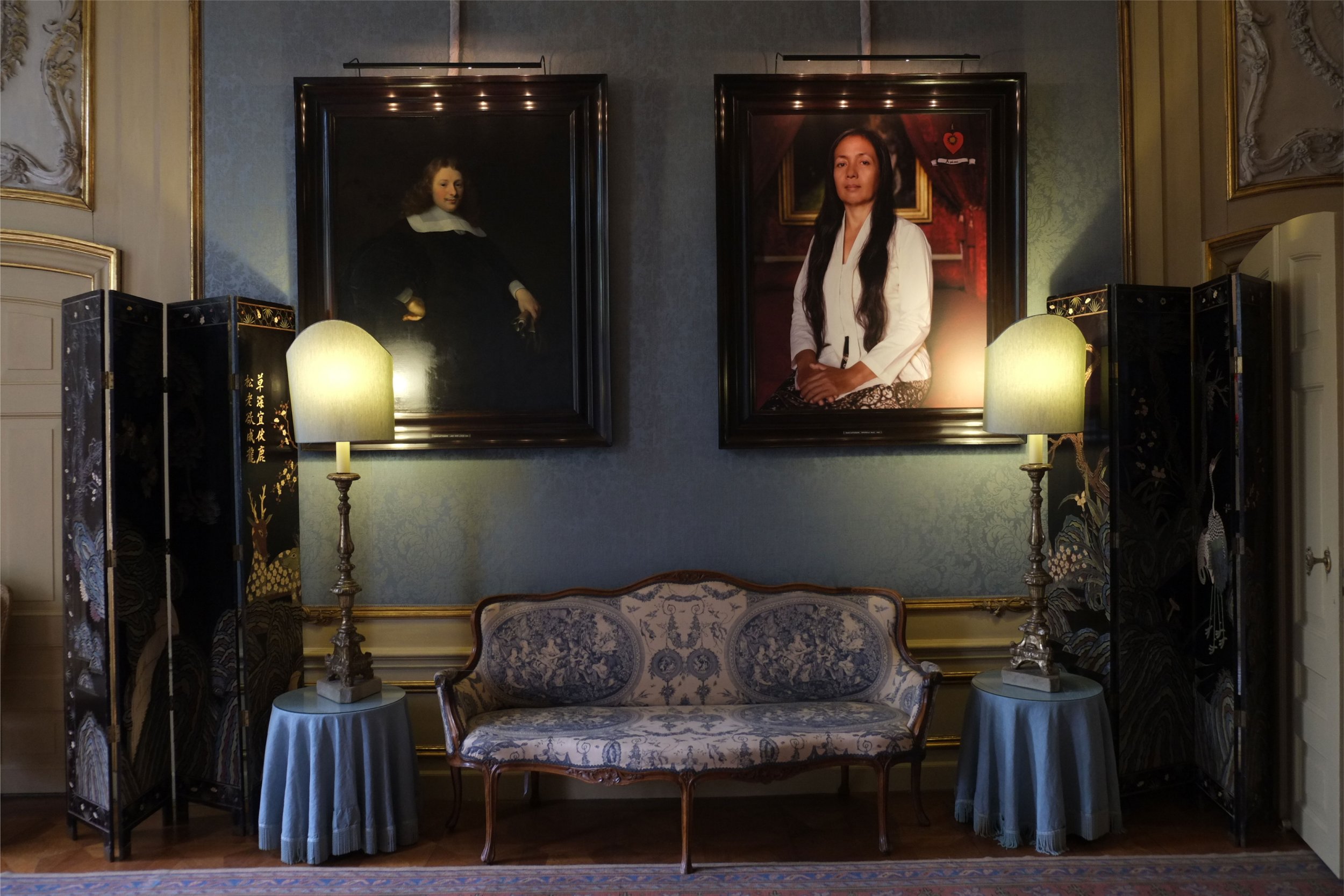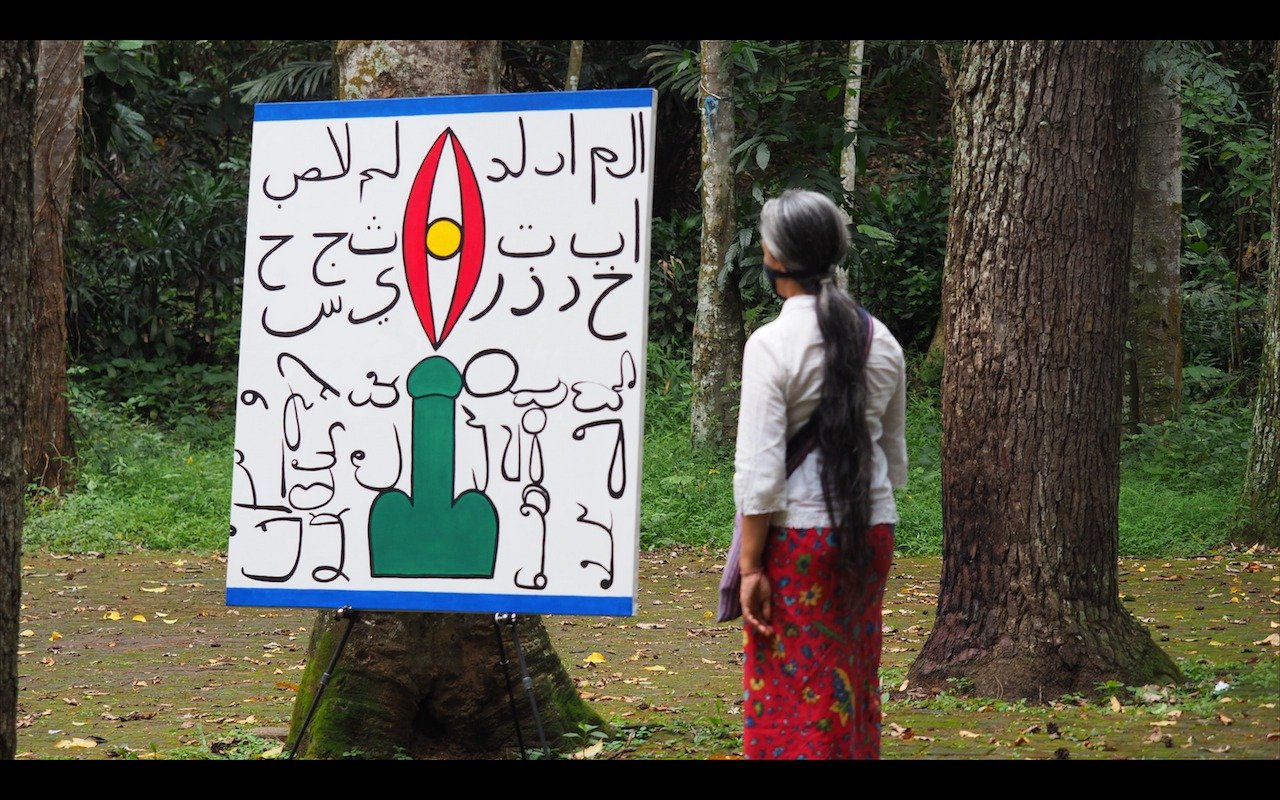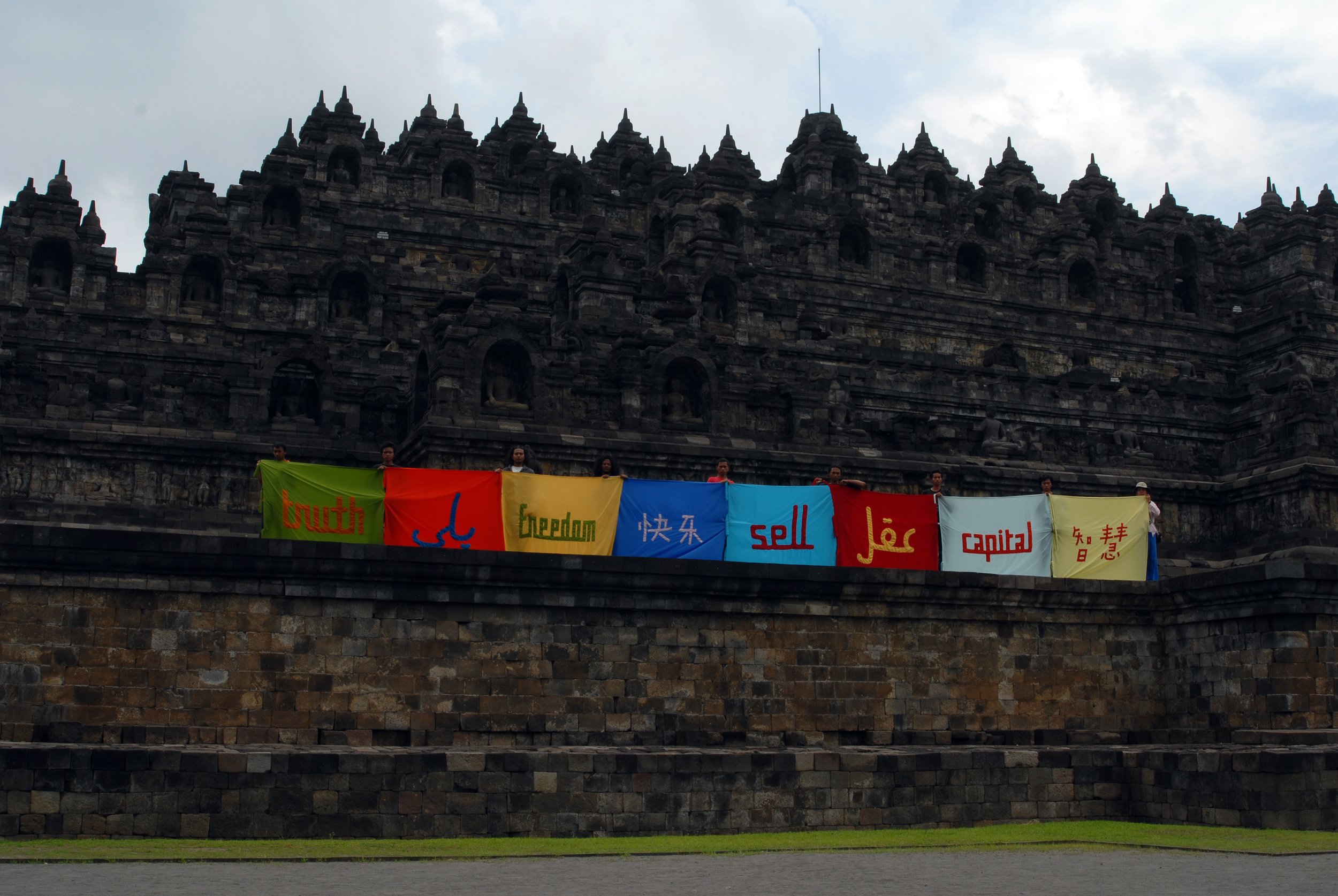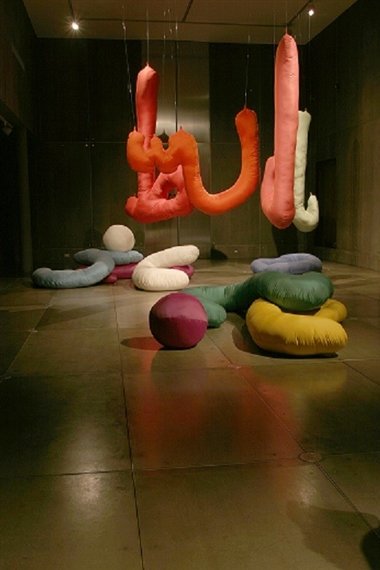
Arahmaiani
From top to bottom
"Dutch Wife" Van Loon Museum Amsterdam 2013-01
"Lingga Yoni " - (1993, 2014, 2019)
"Flag Project" - (2006 – 2022)
"Shadow of The Past" - (2016, 2018)
"Furious Mother Earth” - (2022)
“The Thread “- (2006)
Arahmaiani (b.1961)
Born in Bandung, Indonesia
Arahmaiani is known as the most outspoken and foremost activist artist, whose fame stretches to the corners of Asia and the West. A rebel in the eyes of her adversaries, she has been lauded for her bravery, strength and daring to stand up against injustice, repressive fanaticism and discrimination of any kind.
As a child Arahmaiani, who was born in Bandung, loved to listen to stories about the Prophet who became the idol of her early years evoking a desire to become a prophet herself. But that dream was dashed when she was told she could never be one, because she was a girl. It was her first confrontation with the issue of inequality, which she says has haunted her forever.
Early on, (1980s) she went public, marking her first performance protesting the rise in accidents along the main thoroughfare in Bandung. She wrapped the lamp posts along that main street of the city with what looked like blood stained bandages, stopped the traffic to distribute flyers detailing the number and types of rising accidents along this street. She was jailed, expelled from art school at ITB and banned from any exhibition at the time. Increasingly considered a troublemaker, she left the country, becoming a nomad, and sharing the lives of street artists. But she also studied in Enschede/Netherlands and Sydney while enhancing her knowledge of art, culture, and philosophy.
Exploring the issue of her Muslim identity and its diverging ramifications, her works were perceived as provocative and have often drawn the wrath of fundamentalists.
Her work Do Not Prevent the Fertility of the Mind (1997, 2014) refers to her experience of being arrested as a student, as well as the Suharto government’s birth control policies. The work used sanitary napkins, fluorescent lights, medical equipment, a wooden stool, a vial of blood and photography.
Greatly inspired by Hindu/Buddhist culture, her Lingga Yoni painting of 1994 already aspired to put an accent on the symbolic and philosophically inseparable entities as a sacred union of the phallus and the vagina. Combined with Arabic letters covering the canvas denoting the phrase “Nature is a book,” it became misunderstood as mere feminist activism. But today, she notes, it is recognized as intrinsic to the critical need for balance in the world’s power relations to achieve peace
In 2006 she created her Flag project as a means of dialogue and re-building community. The community-based project started with one flag of her own design with the Arabic-derived Indonesian word akal (sense or cunning), other designs followed denoting issues of consumerism and capitalist power, such as names of multinational corporations like Freeport and Coca Cola. The project eventually widened from Indonesia to Australia, Malaysia, Singapore, the Philippines, Japan, Thailand and China.
Meanwhile Arahmaiani also worked in Tibet, with Buddhist monks, in an effort to minimize ecological destruction in the Tibetan plateau region. Her work in Tibet impacted on her revived understanding of cultural diversity and spirituality, which she came to understand had traveled to Tibet from their original source in the Borobudur era in Java. Passionate to show the human face of religion, she created cushions shaping the word Allah in Arabic letters (in Stitching the Wounds). These too met with critical commentaries, which she defies insisting that the word Allah for her means Love.
But a quality of calm and peacefulness is tangible in the monochromatic gray color of the Pillows of Dukkha, and the paintings featuring women’s faces, some crowned with inscriptions in Arabic and Tibetan.
Informed by Tibetan Buddhism, she explored such issues as cultural syncretism, humanity’s interconnectedness with nature, and the place of the feminine in religious traditions and in spiritual life in general, which resulted in a project and video titled Shadow of the Past. Meanwhile her video titled Lasem shows her walking through the empty buildings in the abandoned Javanese town in Central Java that was once part of the Majapahit kingdom and inhabited by ethnic Chinese Indonesians from whom her grandmother used to buy batiks.
Continuing to strive against environmental destruction, Arahmaiani is currently engaged in helping communities in Bali and Yogyakarta to apply traditional methods and wisdoms to develop sustainable organic farms.
It seems her passionate activism has crystallized into a depth of quality concerning the future of humanity and the future of the earth. Coming back to the concept of Yoni Lingga, she reiterates it as a basic principle for achieving peace in the world.
Arahmaiani has been involved in more than a hundred solo and group exhibitions around the world including the Indonesia Pavilion at the Venice Biennale, the Asia-Pacific Triennial in Brisbane, the landmark 1996 exhibition Traditions and Tensions at Asia Society/New York, Gwangju Biennale, Sarjah Biennale, just to name a few. And the Global Feminisms show at the Brooklyn Museum (2007) where she spoke out against all kinds of conservatism, fundamentalism and dogmatism, whether coming from religion or from the globalised economy.
Her artworks have appeared in institutions in the United States, Canada, Germany, the Netherlands, Japan and beyond.
CB 22Feb 2022







